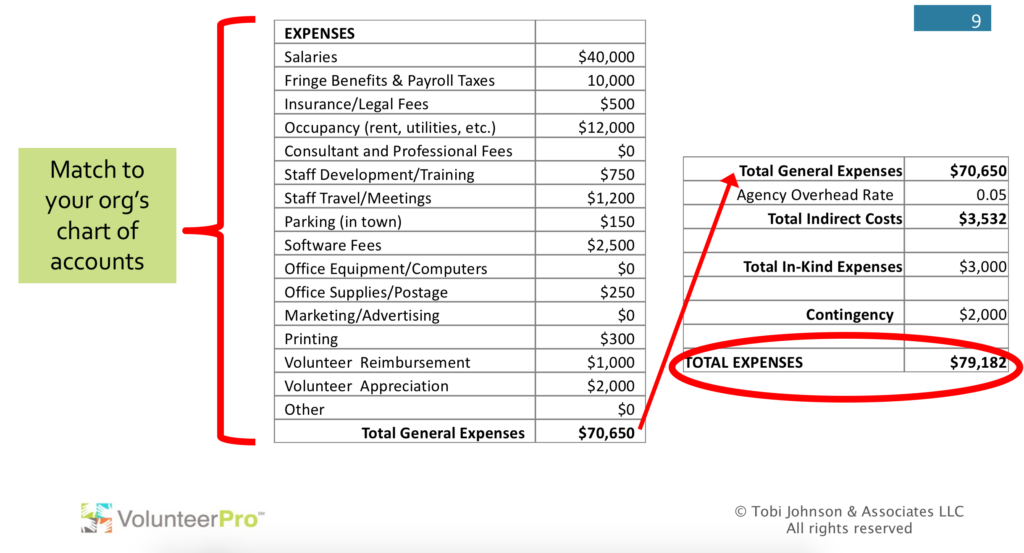
How to Secure Funding for Your Volunteer Programs
We often get questions about where to find grant funding for volunteer programs.
After all, while volunteers may work for “free,” engaging and supporting them is not.
Despite this reality, grant funding that is directly earmarked for volunteer services is uncommon. With the notable exceptions of the Leighty Foundation and the Volunteer Generation Fund (in the US), grants that support the real costs related to volunteer talent management are few and far between.
So, organizations must be a little more creative when raising the needed funds to adequately resource their volunteer programs.
In this blog post, we offer some helpful advice on how to set a budget for your volunteer program and find a way to fund it.
Funding for Volunteer Programs Starts with a Realistic Budget
As the saying goes, if you don’t know where you’re going, chances are you won’t get there.
That’s true for strategic planning; it’s also true for budgeting.
If you don’t know how much your volunteer program costs to run, chances are you’ll fall woefully short when it comes to funding the enterprise sufficiently.
It always surprises me how many volunteer managers either don’t have a dedicated volunteer program budget or haven’t seen it.
In fact, in our 2019 Volunteer Management Progress Report, we found that 23 percent of volunteer managers don’t know their program budget, and 35 percent are working with a volunteer budget of less than $5,000.
While volunteer services may fall within another department, it makes sense to account fully for all the costs related to volunteers and to work closely with the leader of volunteers to both develop and monitor budget expenses. Rarely do others outside volunteer management understand what it really takes to mobilize an unpaid workforce and so, often underestimate the financial need.
Even if you the volunteer manager does not have the authority to approve expenditures, they should take an active part in the financial planning process.
Their input and insight as a volunteer professional are invaluable. When they are not included in the conversation, the organization risks perpetuating the common misconception that because volunteer labor is free, volunteer support is also without cost.
So, take steps to get clear on what volunteers actually cost. This also makes it easier to explain them to potential funders.
Your Budget: What Should be Included in Your Request for Funding for Volunteer Programs
Whether your plan for revenue and expenses is small or large, includes in-kind resources or is strictly cash-based, is stand-alone or integrated into departmental budgets, volunteer-driven organizations should create and track their plan for resource allocation related to volunteers.
There are four general costs covered by nonprofit budgets:
- Direct Costs — Directly related to a specific project or program
- Capital Expenditures — Items that have lasting value (cars, real estate, etc.)
- Indirect (“Hidden”) Costs — Not project-related but necessary to successful functioning
- In-Kind Contributions — “Free” donations of goods or services (count as both expense & income)
Indirect costs are also known as overhead costs, administrative costs, supportive services, or operating costs. Many organizations have a set fee or overhead cost for each program (a percentage of the total program budget).
All four of these kinds of costs should be accounted for if they are directly related to the volunteer program.
What should you include in a budget specifically for your volunteer program?
In short, any resources you need and use, including those that support paid staff in becoming a better manager and leader.
For info on how to make smarter investments in nonprofit employee training, check out our guide HERE >>
Here are a few things to consider including:
- General Marketing (website design, search engine optimization, brochures, promotional items or giveaways, etc.)
- Volunteer Recruitment (online postings, volunteer center membership, background checks, etc.)
- Volunteer Appreciation (special events, recognition items, food/beverage, etc.)
- Volunteer Support & Reimbursement (volunteer management & communications software, mileage, travel, phone, supplies, etc.)
- Professional Development of the leader of volunteers (training, certification, publications, conferences, membership fees, etc.)
Every accounting system has a chart of accounts that classifies sources of revenue, types of expenses, and their corresponding line items. Line items are simply the categories included in each budget.
If you align your categories to match your fiscal department when you develop your volunteer budget, you will be able to monitor expenses and communicate with internal stakeholders in terms they understand.
Some contracts and grants may require that you use their categories. In that case, establish a clear map for your system from theirs (e.g., office expenses may include telephone, printing and your Internet connection).
You can also separate out expenses by grant in your budget.
Sample Line-Item Budget for Volunteer Program
 What If I Haven’t Had a Volunteer Program Budget Before?
What If I Haven’t Had a Volunteer Program Budget Before?
There’s no time like the present to start!
A budget tells your nonprofit’s story through the numbers. Without one related to volunteers, your organization is communicating that volunteers are not a priority and don’t matter to the organization’s success.
Also, if line items related to volunteers are embedded in other departmental budgets, the true cost and impact of volunteers can never be truly known. So, we advocate for keeping them separate.
Have a correct picture of your true expenses also help you calculate the return on investment of volunteers.
You can estimate your volunteer Return on Investment (ROI) in as little as 10 minutes by using our calculator. HERE >>
In addition, when developing budgets for costs and activities that staff outside volunteer services aren’t familiar with, it’s useful to add short narrative explanations for entries.
This helps those reviewing the budget become aware of the underlying rationale and alerts them as to the reason why certain number in this year’s proposed budget may be different from last year.
Budget notes are simply a few sentences to justify need and cost. They can be included in the spreadsheet or in a separate document.
Below are some of the items that might be discussed in your budget narrative, based on your situation:
- Staff Info (positions, qualifications, roles, etc., paid and volunteer)
- The Math (the calculations)
- Vendors (why you chose each one)
- Events (purpose, plans, locations, etc.)
- Recognition (rationale, goals, etc.)
- Overhead (what it covers)
- Expected Volunteer Hours (equivalent FTEs) & Achievements

Where will the Funding for Your Volunteer Programs Come From?
In addition to expenses, a complete budget should include an estimate of your projected program revenue for the next three years, listed by funding source.
By listing more than one year, you can paint a clear picture of how the funding will change over time. For example, you may be able to show as government grants decline, how other planned sources will take over.
This also helps you pinpoint where there are gaps in funding and helps you show where money may need to be raised to support a fully functioning volunteer effort.
If you’re unsure of your levels or sources of future funding, you can qualify your income projections by marking them as committed, likely, and possible.
This helps build transparent and trusting relationships with those who have the power to approve or block your budget. It also helps fundraisers plan for possible contingency funding.
Once you understand your resource needs and gaps, there are several creative ways to secure funding for volunteer programs that don’t necessarily rely on grants specifically dedicated to volunteer program management.
Here are just a few strategies that may help you and your organization distribute sufficient funds for volunteer program support:
- Allocate a percentage of total charitable donations to the organization, based on the percent of total donated volunteer time.
- Allocate a percentage of total program fees based on the percent of the total staff hours volunteers donate.
- Allocate special event proceeds – this can be all proceeds or a portion of the revenue.
- As agency overhead, ask every program in the agency that engages volunteer talent to set aside a percentage for the volunteer budget.
- Include volunteer services as a percentage of the program grants that include volunteers, as part of direct service costs.
- Conduct fundraising campaigns to cover general operating expenses or specific purchases.

If you are fortunate to come across an opportunity that offers direct funding for volunteer programs, ask these questions as you consider applying for a grant for your program.
- Can you meet the grantor’s requirements (e.g., matching funds, tracking & reporting performance metrics)?
- Will they count the wage replacement value of volunteer hours or the in-kind contributions volunteers make as matching funds?
- Do you need to provide the grantors separate accounting reports? If so, when and in what format?
- Is the use of funds restricted to a particular purpose (e.g., volunteer management software, recognition events, etc.)? Can they be used for staff salaries?
- Does the grant provide an allowance for overhead expenses?
- Must the organization be audited to qualify? Do you have access to your most recent audit report?
- Does the grant lead to sustainability? Can it be supported after the grant funds are used up?
- Will the grant encourage donors or volunteers to believe their contributions are not needed?
These questions and more are important to consider before diving into your next grant proposal.
In Closing
If you don’t have a budget for your volunteer program yet, take heart.
Many other volunteer-driven organizations don’t either.
But, as organizations rely more and more on volunteer talent, it’s time to flip that script.
Even if you cannot implement a full-scale budget just yet, take some proactive steps this year to develop a realistic and actionable budget that truly reflects the value of the volunteer effort.
You have nothing to lose and everything to gain.







